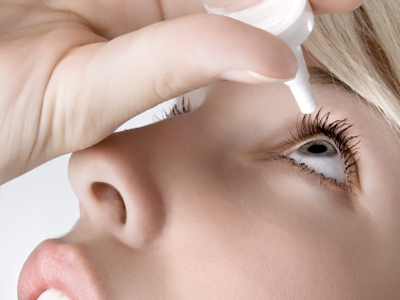Common antibiotic may combat dry eye disease
Meibomian gland dysfunction (MGD) is the leading cause of dry eye disease, which affects tens of millions of Americans. However, there is no FDA-approved treatment for MGD. Researchers from the Schepens Eye Research Institute/Massachusetts Eye and Ear and Harvard Medical School have just identified a potential therapy.
“We discovered that azithromycin, an antibiotic, can directly stimulate the function of human meibomian gland epithelial cells,” said First Author Yang Liu, M.D., a postdoctoral fellow at Schepens Eye Research Institute and Harvard Medical School. Their finding is outlined in a Research Letter that was published Online First in JAMA Ophthalmology.
This finding is very clinically significant, because topical azithromycin is the most commonly prescribed MGD treatment in the USA, but its use is ‘off-label,’ which means the drug’s efficacy has not yet been evaluated and approved by the Food and Drug Administration for patients with MGD. This antibiotic has been presumed to be effective because of its anti-inflammatory and anti-bacterial actions, which may suppress the MGD-associated conjunctival inflammation (i.e. posterior blepharitis) and growth of lid bacteria.
“We hypothesized that azithromycin could act directly on human meibomian gland epithelial cells to stimulate their differentiation, enhance the quality and quantity of their lipid production, and promote their holocrine secretion. Our results support this hypothesis,” said Senior Author David A. Sullivan, Ph.D., Senior Scientist and Margaret S. Sinon Scholar in Ocular Surface Research, Schepens Eye Research Institute and Associate Professor of Ophthalmology, Harvard Medical School.
The findings in this study may help lead to broader use of topical azithromycin as an FDA-approved, ‘on-label’ treatment to ameliorate the pathophysiology of MGD and its associated evaporative dry eye disease.
###
Authors of the paper are: Yang Liu, M.D.; Wendy R. Kam, M.S.; Juan Ding, Ph.D.; and David A. Sullivan, Ph.D.
 This work was supported by grant EY05612 from the National Institutes of Health, the Margaret S. Sinon Scholar in Ocular Surface Research Fund, and the Guoxing Yao Research Fund.
This work was supported by grant EY05612 from the National Institutes of Health, the Margaret S. Sinon Scholar in Ocular Surface Research Fund, and the Guoxing Yao Research Fund.
About Massachusetts Eye and Ear
Mass. Eye and Ear clinicians and scientists are driven by a mission to find cures for blindness, deafness and diseases of the head and neck. After uniting with Schepens Eye Research Institute in 2011, Mass. Eye and Ear in Boston became the world’s largest vision and hearing research center, offering hope and healing to patients everywhere through discovery and innovation. Mass. Eye and Ear is a Harvard Medical School teaching hospital and trains future medical leaders in ophthalmology and otolaryngology, through residency as well as clinical and research fellowships. Internationally acclaimed since its founding in 1824, Mass. Eye and Ear employs full-time, board-certified physicians who offer high-quality and affordable specialty care that ranges from the routine to the very complex. U.S. News & World Report’s “Best Hospitals Survey” has consistently ranked the Mass. Eye and Ear Departments of Otolaryngology and Ophthalmology as among the top hospitals in the nation.
###
Mary Leach
.(JavaScript must be enabled to view this email address)
Massachusetts Eye and Ear Infirmary